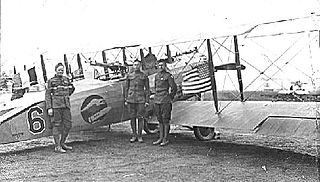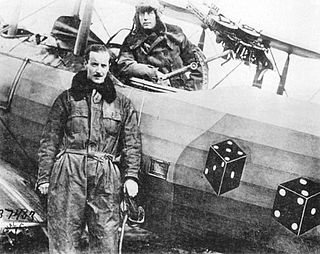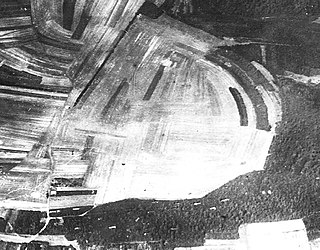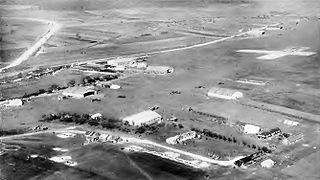
The 12th Aero Squadron was a United States Army Air Service unit that fought on the Western Front during World War I.

The 99th Aero Squadron was an Air Service, United States Army unit that fought on the Western Front during World War I.

The 49th Test and Evaluation Squadron is an active United States Air Force unit. Its current assignment is with the 53d Wing, based at Barksdale Air Force Base, Louisiana.

The 8th Aero Squadron was an Air Service, United States Army unit that fought on the Western Front during World War I.

The 88th Aero Squadron was an Air Service, United States Army unit that fought on the Western Front during World War I.

Toul-Croix De Metz Airfield is a former military airfield which is located approximately one mile (1.6 km) northeast of Toul ; 160 miles (260 km) east of Paris.

The 90th Aero Squadron was an Air Service, United States Army unit that fought on the Western Front during World War I.

The 135th Aero Squadron was a United States Army Air Service unit that fought on the Western Front during World War I.

The 139th Aero Squadron was a United States Army Air Service unit that fought on the Western Front during World War I.

The 22d Intelligence Squadron is a non-flying squadron of the United States Air Force. It is assigned to the 691st Intelligence, Surveillance and Reconnaissance Group, Fort George G. Meade, Maryland.

The Second Army Air Service was an Air Service, United States Army unit that fought on the Western Front during World War I as part of the Air Service, Second United States Army. It was demobilized in France on 15 April 1919 with the demobilization of the United States Second Army. There is no modern United States Air Force unit that shares its lineage and history.

The IV Corps Observation Group was an Air Service, United States Army unit that fought on the Western Front during World War I. It was demobilized on 12 May 1919. There is no modern United States Air Force unit that shares its lineage and history.

The Organization of the Air Service of the American Expeditionary Force on 11 November 1918, represents its maximum strength in World War I. Units of the Air Service are listed as assigned to the order of battle for that date, which was that of the Armistice with Germany. The first air unit arrived in France in September 1917, while the final air unit reaching the front did so on 9 November 1918. Unit operations began in April 1918. At the armistice, 57,508 officers and men served in the Air Service of the AEF, 24,512 in the Zone of Advance, and 32,996 in the Services of Supply. Of its 6,861 officers, 4,088 were on flying status and 219 were qualified observation balloon aviators. 1,724 of those on flying status and approximately 100 of the balloonists served in combat units.

Saints Aerodrome, was a temporary World War I airfield in France. It was located 0.7 miles (1.1 km) North of Saints, in the Île-de-France region in north-central France.

Amanty Airdrome was a temporary World War I airfield in France, used briefly by French units, thereafter by squadrons of the Air Service, United States Army. It was located 1 mile (1.6 km) northwest of Amanty, and approximately 20 miles (32 km) south west of Toul, in the Meuse department in the Lorraine region in northeastern France (48.527383,5.598371).

Delouze Aerodrome was a temporary World War I airfield in France, used by the Air Service, United States Army. It was located 0.8 miles (1.3 km) NE of Delouze-Rosières, in the Meuse department in Lorraine in north-eastern France, and is approximately 25 miles (40 km) west-southwest of Toul.
Belrain Aerodrome was a temporary World War I airfield in France, initially used by French units, and later by squadrons of the Air Service, United States Army. It was located 0.7 miles (1.1 km) south of Belrain, approximately 35 miles (56 km) west-north-west of Toul. in the Meuse department in the Lorraine region in northeastern France.

Souilly Aerodrome was a temporary World War I airfield in France. It was located 1 mile (1.6 km) Northeast of Souilly, in the Meuse department in north-eastern France.

The 163d Aero Squadron was a United States Army Air Service unit that fought on the Western Front during World War I.

The First Army Air Service was an Air Service, United States Army unit that fought on the Western Front during World War I as part of the Air Service, First United States Army. The First Army Air Service was the largest and most diverse Air Service combat organization of the American Expeditionary Forces in France, and most American Air Service combat units were assigned to it when assigned to the front.




















